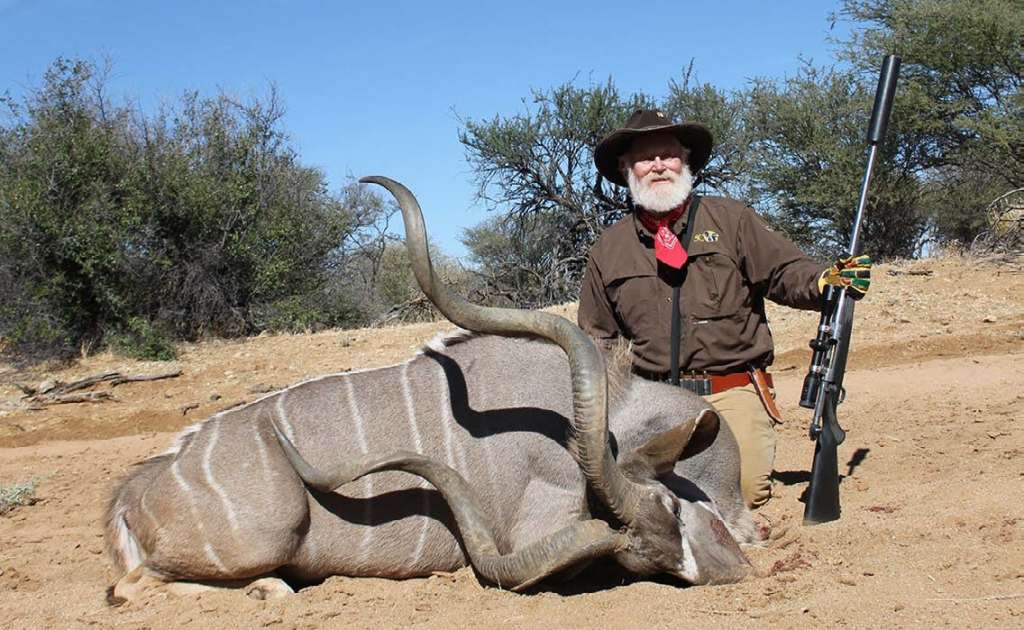As a youngster growing up “out in the country,” I always had a knife on my belt or in my pocket. Knives were tools—necessary tools. They served many purposes: skinning and cutting up rabbits and squirrels, cleaning fish, digging worms, creating kindling to start a campfire or a fire in our home’s wood stove. They also provided a way to cut hay bale strings and feed sacks, and they occasionally served as a pry bar or a screwdriver. The list goes on and on. When anyone needed a knife, no matter the purpose, I always introduced mine (which was either a folding knife or a fixed-blade sheath knife) with great pride.
Back then, I carried at least two knives. One was for chores, accomplished with a small blade; the other was a longer blade (although not quite a Bowie knife) for use on things such as scraping hogs at hog-killing time, and as a short hatchet to chop down trees and clear brush.
During my youth, no self-respecting “young feller” would be caught without a knife! Our “school knives” were razor sharp and usually on the short-bladed side. Interestingly, all of us, as grade school and high school boys, carried knives, yet no one ever got cut. In high school, if we were fortunate enough to bring a vehicle to school, we also all had guns in our pickups. We proudly displayed them on a gun rack across the back window. Back then, there were no school shootings. And if anyone had ever tried such, all of us knew how to shoot and how to shoot accurately—both, boys and girls!
As a youngster, I did occasionally get a knife cut, but it was of my own doing. I loved to “carve things.” And it was not unusual to “decorate” my carvings with a bit of my own blood from a cut finger. Those cuts were never serious enough to go to the doctor for stitches.
With any cut regardless of length or depth, mom and dad had me stick my wounded finger or hand in a bowl of “coal oil” until the bleeding stopped. Afterward, a wool rag was soaked in “coal oil” and wrapped on the cut. Amazing how well coal oil worked on just about every possible ailment back then! If no coal oil was available, “Dr. LeGeare’s Healing Oil” was an adequate substitute. I am proud to say I still have eight fingers and two thumbs, albeit every one of them bears scars as the trophies of my youth.
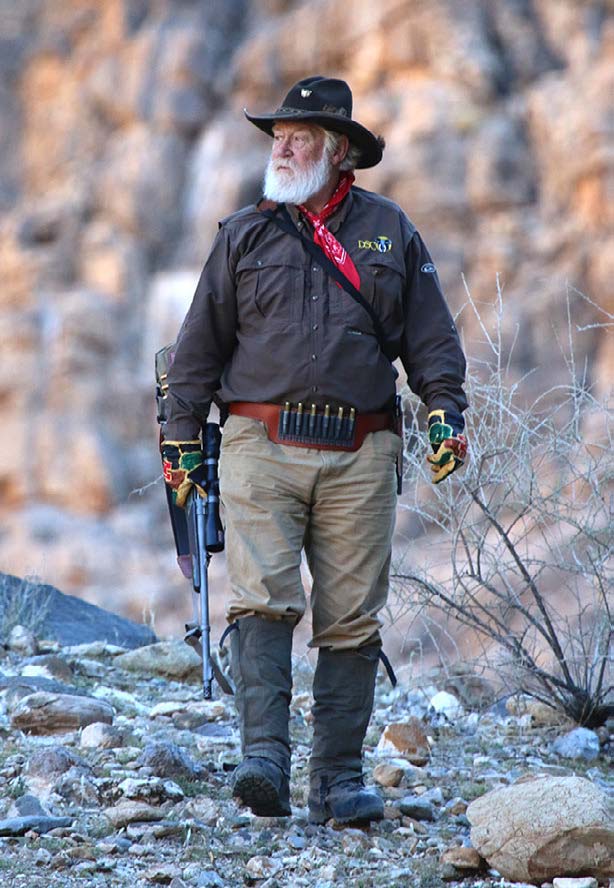
Passing Along Experience
What does all this have to do with hunting knives? Allow me to elaborate!
Early on I learned several things about knives that have served me well into adulthood. Over the years I have learned a bit from experiences as an outdoorsman, amateur carver, serious life-long hunter, hunting guide and wildlife biologist who has necropsied many, many animals. Some of those include:
- A sharp knife is less dangerous than one with a dull
- The best way to have a sharp knife is to keep it
- If you are going to carry a folding knife, it should be a lock
- The size of knives carried by an individual is (More about that a little later.)
- If you are prone to cutting yourself, give your knife to someone else to
- Prone to cutting yourself? Refer to the above or carry a tube of Super Glue wherever you
- The old adage of never cutting toward yourself bears great
- It is seldom a good idea to lend someone a good hunting
What is a good hunting knife? That, mi compadre, is a matter of opinion! As someone who has hunted a lot of places and for a fair amount of critters small to large; who has gutted, skinned, caped and butchered hundreds of critters; as a wildlife biologist involved in many research projects and who has “taken apart” more critters than most people have seen in their lives (simply a fact), I will give you my opinion. If you disagree, so be it!
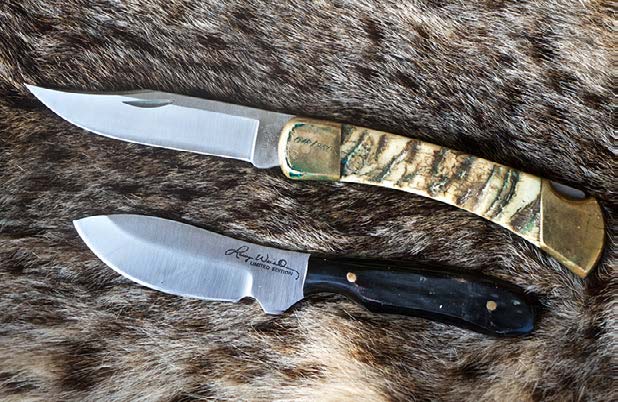
material Larry prefers
Two Knife Types
To me, there are basically two types of hunting knives: those that fold, and those with a fixed blade that are usually carried in a sheath or scabbard.
I am not a fan of knives that use replaceable blades, be they fixed blades or folders. Replaceable blades tend to dull rather quickly, the blades tend to break, and they are not “stout enough” to open an animal chest cavity.
Replacing blades while having wet or bloody hands is a great way to get to know the staff at the local hospital, if there is one within in driving distance. A friend has been quoted as saying, “I use ‘xxxx’ replaceable blade knives like my life depends upon them…” or something to that effect. Frankly, I thought he valued his life a whole lot more than that! My opinion on hunting knives is based on many, many years of using knives as a nearly everyday tool, and something not just carried in my pocket or belt to try to impress people.
Size Matters
I mentioned that size counts in hunting knives. In my youth, I carried long-bladed knives. I often used them as a machete or a small axe. For those purposes, they worked okay. But that is where their use essentially ends, I believe. The long-blade knives of my youth decorate my “knife drawer.” I take them out on rare occasions to look at them, then put them right back into the drawer.
After many years of gutting, skinning, caping, butchering and taking apart animals, I have concluded that any blade longer than your index finger is a total waste of good metal! Over the years, I have “taken care of” buffalo, moose, elk, caribou and the like with a blade measuring a grand total of three inches and shorter. Years ago in Alaska, hunting Alaskan Brown bear with Woods Outfitting, Wayne Woods and I skinned my 10-foot 5-inch bear using only a couple of Swiss Army knives with blades less than two inches long!
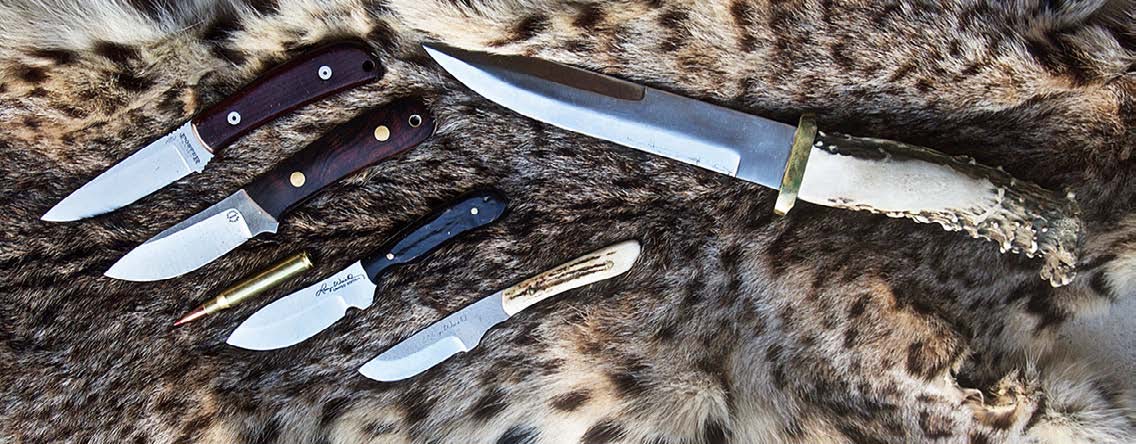
Consider Control
Any blade longer than your index finger is difficult to control, particularly if you have to reach into an animal’s chest cavity without cutting through the sternum. With a long blade, you do not know where the tip is. This becomes even more important if your hands are cold and wet with blood, whether you are wearing latex gloves or not.
I love knives that have drop-point blades. The point slopes downward toward the tip. This setup is as opposed to a clip blade that turns upward toward the tip, regardless of whether it is a fixed or folding blade.
Back to the length of blade. During my years managing ranches in the Southwest, which I often outfitted and guided for hunting, one of the ways I judged the hunting experience of a new client was to ask to see his or her hunting knife.
I learned very quickly that the longer a hunting knife’s blade, the less hunting experience the owner had. I was never proven wrong in our camps or the many other camps I have visited as a biologist, hunter, outdoor writer or television host.
Conversely, those who carried blades no longer than three inches were good hunters with a fair amount of hunting experience. More recently, I have also judged the experience of a hunter by whether or not he or she carried a knife with replaceable blades. Yeah, you guessed it! Those who carry the latter have usually not hunted very much and have likely seldom ever taken apart an animal! But they do have the “latest and greatest?” (Sure! It’s “marketing!”)
Sharpening Edges
Most knives come from the maker sharp. But after use, they lose their edge. I carry either a ceramic stick or a small diamond sharpening stone in my pack, or at least in my hunting kit back at camp. As soon as I finish a “job” I sharpen my knife in preparation for the next one. In the case of something the size of a moose or elk, I usually carry two knives, but then I stop every once in a while to maintain the sharp edge.
There are numerous commercial sharpening systems, particularly those produced by Lansky, Warthog Sharpeners, Work Sharp and few others. These are designed to maintain a certain angle on your sharpened edge. These types of systems are great to keep in camp or at home.
Types of Steel
Knife blades are made of several types of steel, including tool steel, stainless steel, carbon steel and Damascus steel. Carbon steel produces a strong, easy-to-sharpen blade. Some of the more popular Carbon steel blades are C1095, which means the blade contains 1% manganese and 95% carbon. There are several other “levels” of Carbon steel blades as well.
Stainless steel blades are usually described in two numbers; 420 and 440 (the latter is a higher-grade cutlery steel). These numbers refer to the percentage of carbon and chromium in the steel. Tool steel is made of several different alloys and is one of my favorites, particularly those of D2 designation. Damascus steel is created by forging two or more different types of steel together and then using an acid-etching process to create beautiful unique patterns.
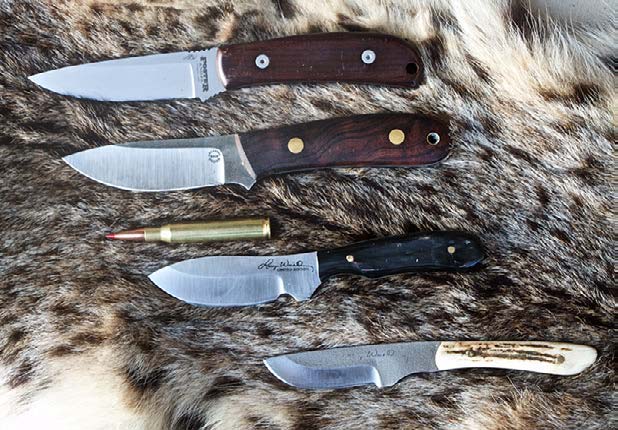
My Favorites
I have several commercial and custom knives made with various steels. I mentioned the D2 Tool Steel as a favorite. Knives made of these blades hold an edge well and can be quickly sharpened. Over the years, I have had Silver Stag build numerous knives for me, using scales (handles) made from antlers and horns of animals I have personally taken. Those same knives also bear my signature on the blade or the scales. I use them, but I also frequently donate them to DSC and DSC Foundation and occasionally to other wildlife conservation organizations to help them raise funds for wildlife conservation.
Today’s Great Items
Today, there are some great hunting knives that are both custom-made and commercially produced. One of the latter is Diamond Blade. Their blades are created through “friction forging” and they hold an edge for a very long time. Like Knives of Alaska, Diamond Blade Knives is owned by a longtime, fellow wildlife biologist friend, Charles Allen. DBK’s blades are tough and keep an edge for an unbelievable amount of time.
Gauging Fit
As to gauging the fit of a knife, scales or handles of hunting knives should fit well in your hand so you can control your knife when your hands are wet and bloody. Some scales are really pretty to look at, but they are tough to hold onto when your hands are wet. That said, I do like knives with pretty wood, antler and horn decor. But I also appreciate some of the synthetics that may not be as pretty to look at but that let you hold onto them no matter what you are doing.
My hands are on the large side, so I like a knife with a sizeable “handle.” But I want one that does not slide around in my hand, particularly if I’m wet. If the handle does that, I can’t fully control it. When buying a knife, I wet the scales to make sure the knife does not slip around in my hand.
Earlier I mentioned blade design and how I prefer those that are referred to as “drop-point.” I think I can better control such knives. When opening an animal, I can control the point so I do not accidentally puncture the distended rumen in the case of a deer or a gut.
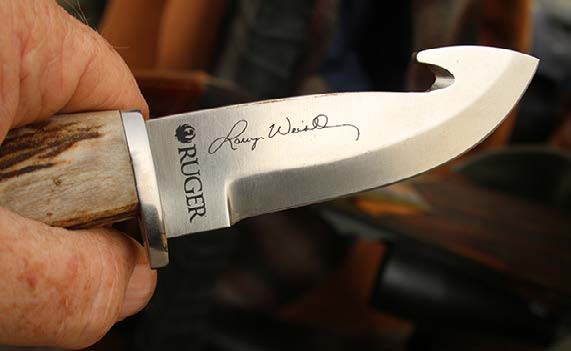
Different Handle Materials
Another hugely important and impactful feature of a hunting knife is the type of material used for the handle. Depending on the intended use of a knife, manufacturers will choose from an assortment of handle materials, such as wood, bone, metal, composites, and many more. These different materials all have varying properties and functions, for example, wood knife handles are a gorgeous option, but are susceptible to staining, increased wear, and chipping due to their porous nature.
When it comes to hunting knives, the materials used in the fabrication of the knife handles need to be able to withstand the brutal forces of nature and the rough and tough use typical of a knife being used on a hunt, whether for self-defense or for field dressing. For this reason, a lot of hunters elect to purchase knives that boast a composite or metal handle. Metal handles, such as stainless steel and aluminum, offer a great look and lightweight feel, whereas composite handles offer a far more diverse, customizable look and can withstand just about any wear and tear.
Gut Hooks
Recently I have seen a goodly number of knives having a “gut hook,” a detail that refers to a sharpened “slot” cut into the top of the blade. To use it, cut carefully through the skin and into the abdominal cavity without cutting a “gut,” then slide the “hook” portion into the hole, hook onto the skin, and pull. That action opens the abdominal cavity.
That is the good side of “gut hook blades.” The downside is that you have to be careful when using the knife beyond opening the abdomen so you don’t push your thumb on the top of the blade and have it or your finger slide into the sharpened edge of “gut hook.” Doing so will have you bleeding from a deep cut. I have several such knives, but I seldom use them. To me, these designs are a solution to problems that do not really exist.
As I mentioned before, hunting knives come in all sizes and shapes. I know what I like based on many years of using knives before, during and after a hunt, rather than wearing one on my belt or carrying one in my pocket to impress others.
What is your favorite style?
Per our affiliate disclosure, we may earn revenue from the products available on this page. To learn more about how we test gear, click here.



